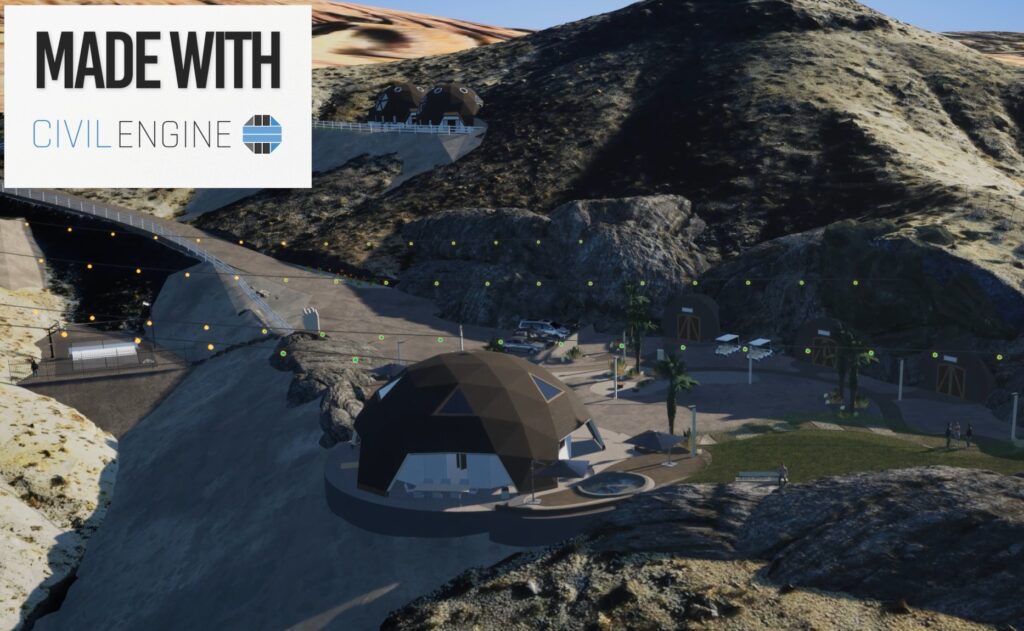In the world of civil engineering and transportation projects, effective communication is paramount. Yet, for too long, achieving high-quality 3D visualizations—the most impactful way to communicate complex designs—has been a slow, costly, and often outsourced endeavor. Project teams frequently faced a tough choice: invest heavily in specialized studios for a single, polished deliverable, or compromise on visual clarity due to time and budget constraints.
At Beyond CAD, we understand this challenge intimately. Having experienced the traditional visualization workflow firsthand through Civil FX, we know that the average 3D visualization for a transportation project could easily run between $40,000 to $60,000. Beyond the sticker shock, these costs also reflected lengthy production cycles, often stretching from weeks to months, requiring highly specialized software like 3ds Max or raw Unreal Engine development, and demanding constant iteration with external teams.
This is where Civil Engine fundamentally changes the equation.
From Drone to Dome: Building the Base
The journey of Light Hill Resort began not with a CAD file, but with over 600 high-resolution drone photos of the property. These raw images, captured in their natural state, were then professionally processed into a detailed 3D photogrammetry mesh, delivered as a SketchUp model. This established the foundational “base model” for the entire project in Civil Engine.
This initial step highlights a crucial point: Civil Engine (and Beyond Typicals) are designed to integrate seamlessly with various external data sources. Whether it’s drone imagery, existing SketchUp models, InfraWorks designs, or other industry-standard formats like .obj or .fbx, our products serve as the central hub for bringing disparate pieces of your project together. Sam meticulously sculpted this base model, separating existing terrain from proposed cuts and fills, preparing the site for phased development within Civil Engine.
Civil Engine: The Canvas for Your Vision
Once the meticulously prepared base model was imported into Civil Engine, Sam’s vision truly came to life. He used Civil Engine’s robust features to:
Texture and Detail: Apply high-quality materials to roads, landscapes, and structures.
Populate with Assets: Utilize Civil Engine’s extensive 3D asset library, adding everything from golf carts and renewable energy elements (wind turbines, solar panels) to custom-imported SketchUp assets like unique palm trees and putting greens. He even creatively used pipes and glowing spheres to design enchanting draped lighting, demonstrating the flexibility of Civil Engine’s asset system.
Define Spaces: Organize the vast 25-acre property into distinct, themed areas like “Sunset Sanctuary,” “Starlight Stage,” and “Daylight Domes,” each named to evoke a sense of place and experience.
Visualize Phasing: Critically, Sam leveraged Civil Engine’s phasing system. By meticulously grouping existing, proposed, and “existing removed” elements, he could illustrate the multi-stage construction process for the resort using the intuitive Gantt chart publisher – a vital feature for communicating complex project timelines.
Immersive Exploration: The ability to “walk” and “drive” through the proposed resort in real-time, offering first-person perspectives, became a powerful tool for conveying the project’s experience.
The AI Advantage: Narrating and Enhancing the Story
The true innovation in Sam’s approach to Light Hill Resort was the integration of AI-generated media, which dramatically enhanced the storytelling capabilities:
AI-Generated Narration: Instead of recording his own voice, Sam used AI to read the script he had prepared. This dramatically sped up the voiceover process, allowing for rapid iterations and a polished, consistent narration.
Synchronized Storytelling: With the AI-generated audio track in hand, Sam then precisely timed Civil Engine’s camera animations to the narration. Features like eased camera interpolation and hold keyframes allowed for smooth, deliberate movements that perfectly highlighted each area of the resort as it was described.
Seamless Blending with Photography: For the video’s opening, Sam utilized Civil Engine’s photo compositing feature, blending a drone photo of the actual site with the 3D model. This created a powerful “before-and-after” or “vision-on-site” effect, grounding the conceptual design in reality.
Leveraging Generative AI (like Veo 3) for Rich Detail
Beyond the core Civil Engine visualizations, Sam further enriched the project’s narrative by incorporating AI-generated videos using tools like Veo 3. This allowed for the rapid creation of short, highly specific video clips that would have been far more time-consuming and often lower quality if attempted entirely through traditional 3D modeling and rendering:
Highlighting Intimate Spaces: Imagine showcasing the interior of a proposed geodesic dome, complete with detailed furnishings and ambient lighting, or a time-lapse view of a sunrise from an A-frame cabin. Modeling and rendering these detailed, often internal, scenes in full 3D within a complex civil visualization tool would add significant overhead and specialized effort.
Dynamic Environmental Effects: Creating realistic environmental effects like a time-lapse of a sky transitioning from day to night, or specific weather phenomena, can be particularly challenging and render-intensive in traditional 3D. Generative AI excels at these types of dynamic visual elements.
Unmatched Efficiency and Quality: By generating these specific, detailed clips with AI, Sam achieved a level of visual fidelity and speed that would be prohibitive for a typical civil project’s budget and timeline if solely relying on 3D modeling and rendering for every intricate detail. This blend allows Civil Engine to focus on what it does best – large-scale infrastructure visualization – while AI tools fill in the highly detailed, narrative-specific gaps.
The Future of Visualization: Faster, More Compelling
What Sam’s Light Hill Resort project demonstrates is the future of civil visualization. By expertly blending the robust capabilities of Civil Engine (and equally, Beyond Typicals for rapid street section design) with the efficiency of AI-generated media and external data, project teams can:
Accelerate Production: Significantly reduce the time spent on creating stunning visualizations. What used to be weeks of effort is now hours.
Enhance Storytelling: Add professional narration, seamlessly integrate real-world photography, and incorporate rich, AI-generated details to create more immersive and persuasive presentations.
Iterate Faster: The speed and flexibility allow for quick adjustments and exploration of multiple design alternatives.
Civil Engine and Beyond Typicals are not just software; they are platforms that empower you to synthesize diverse media, streamline your workflow, and ultimately tell the story of your projects in a way that truly resonates.
Ready to leverage the power of integrated visualization and AI for your next project?

